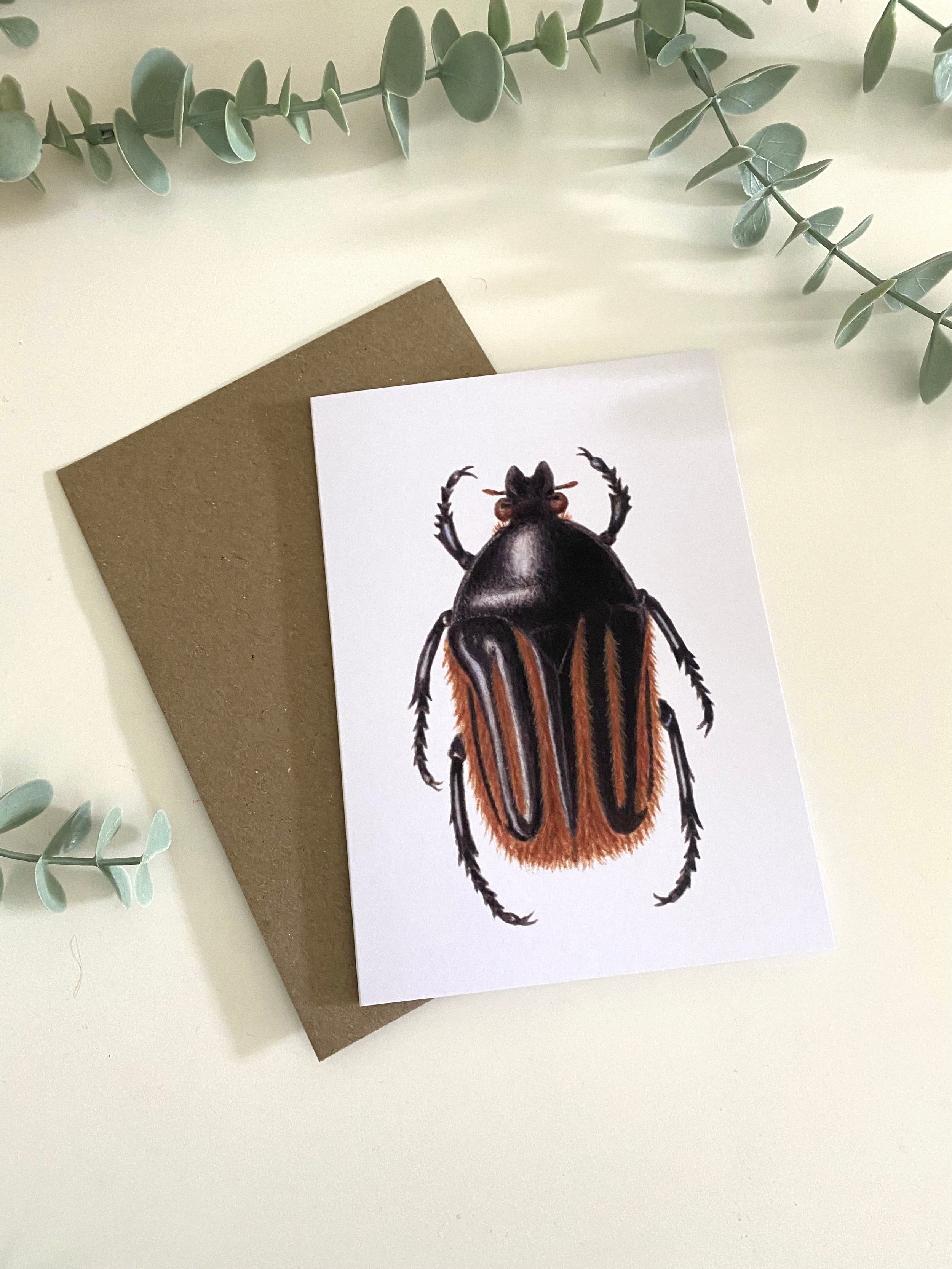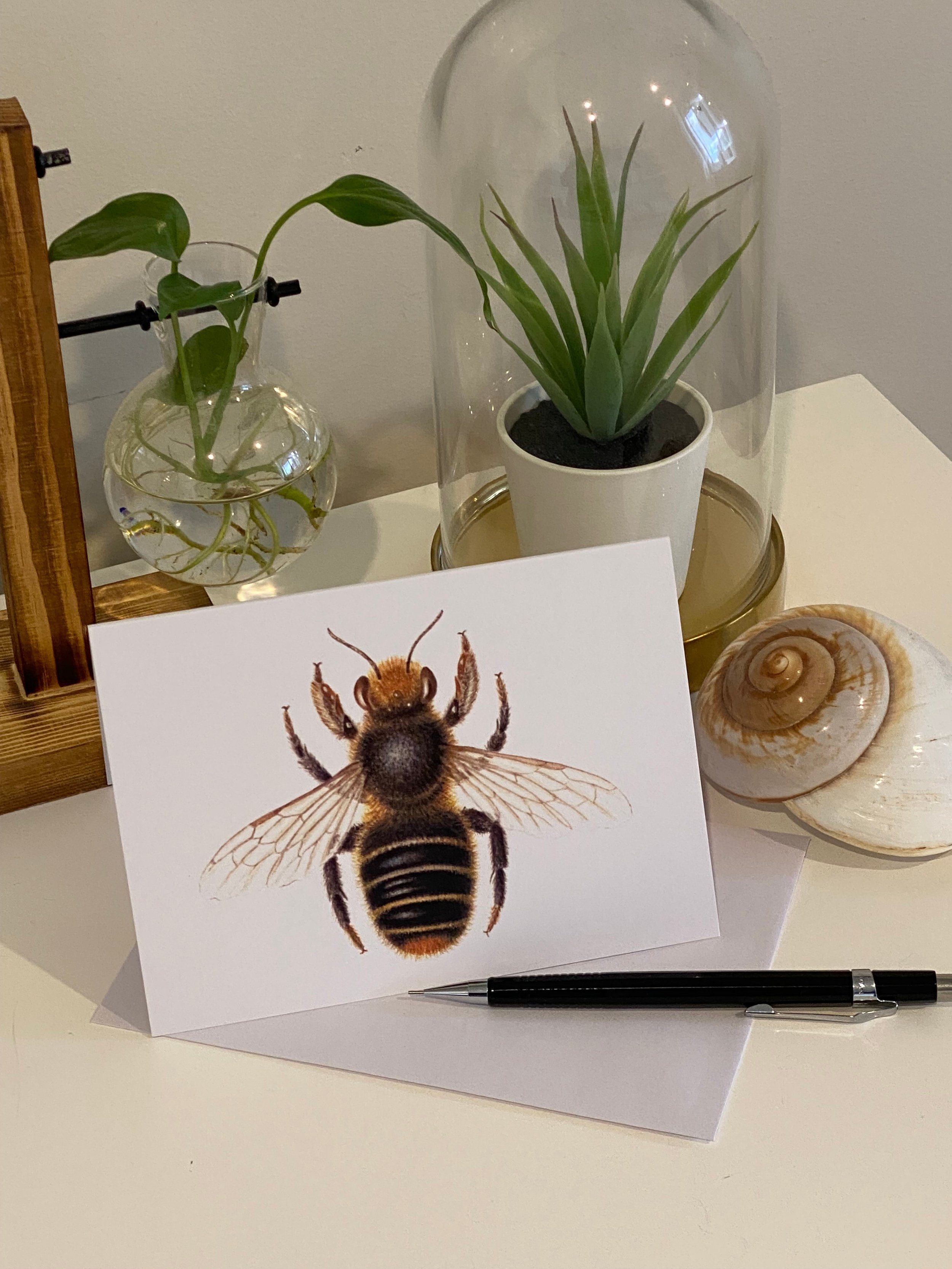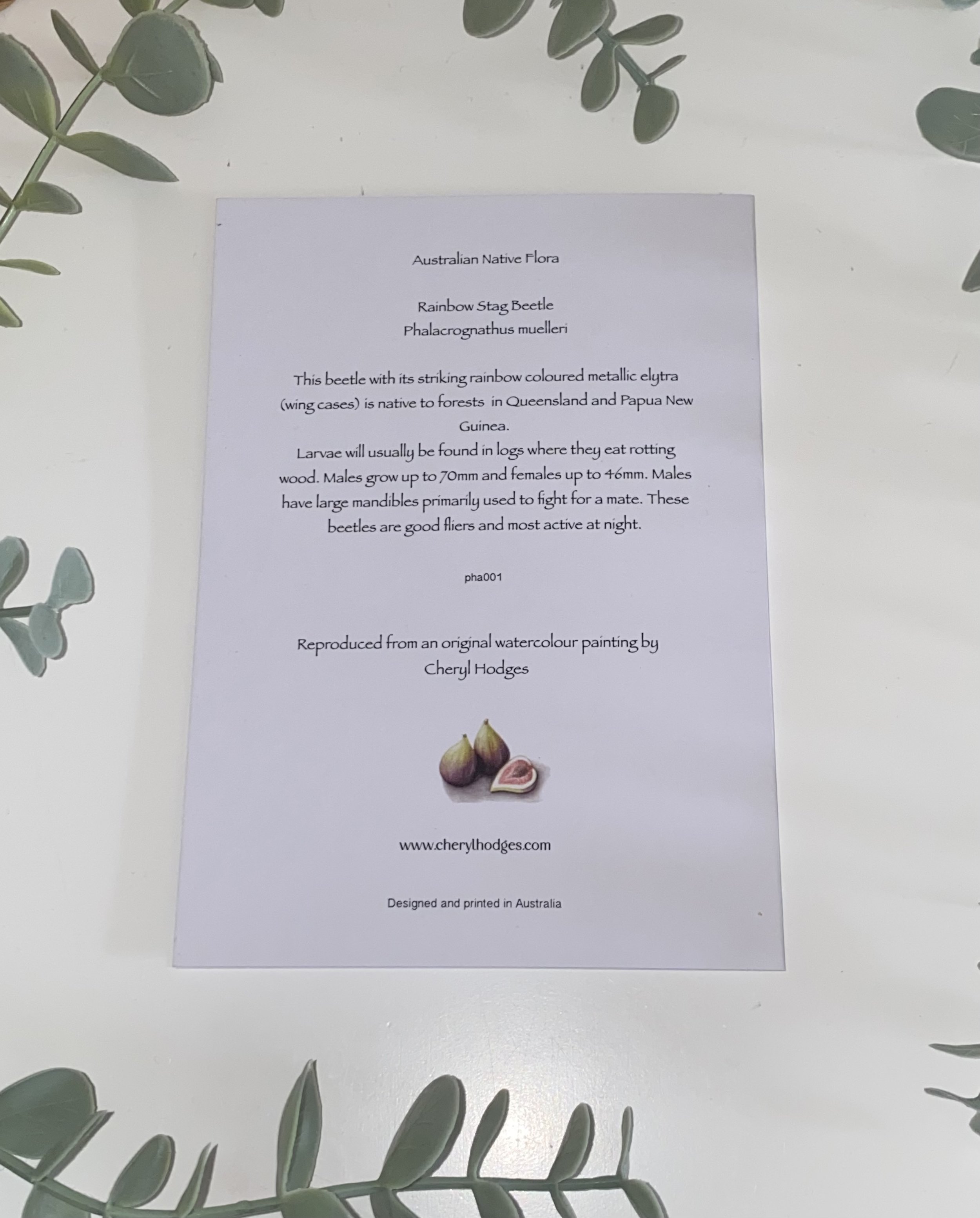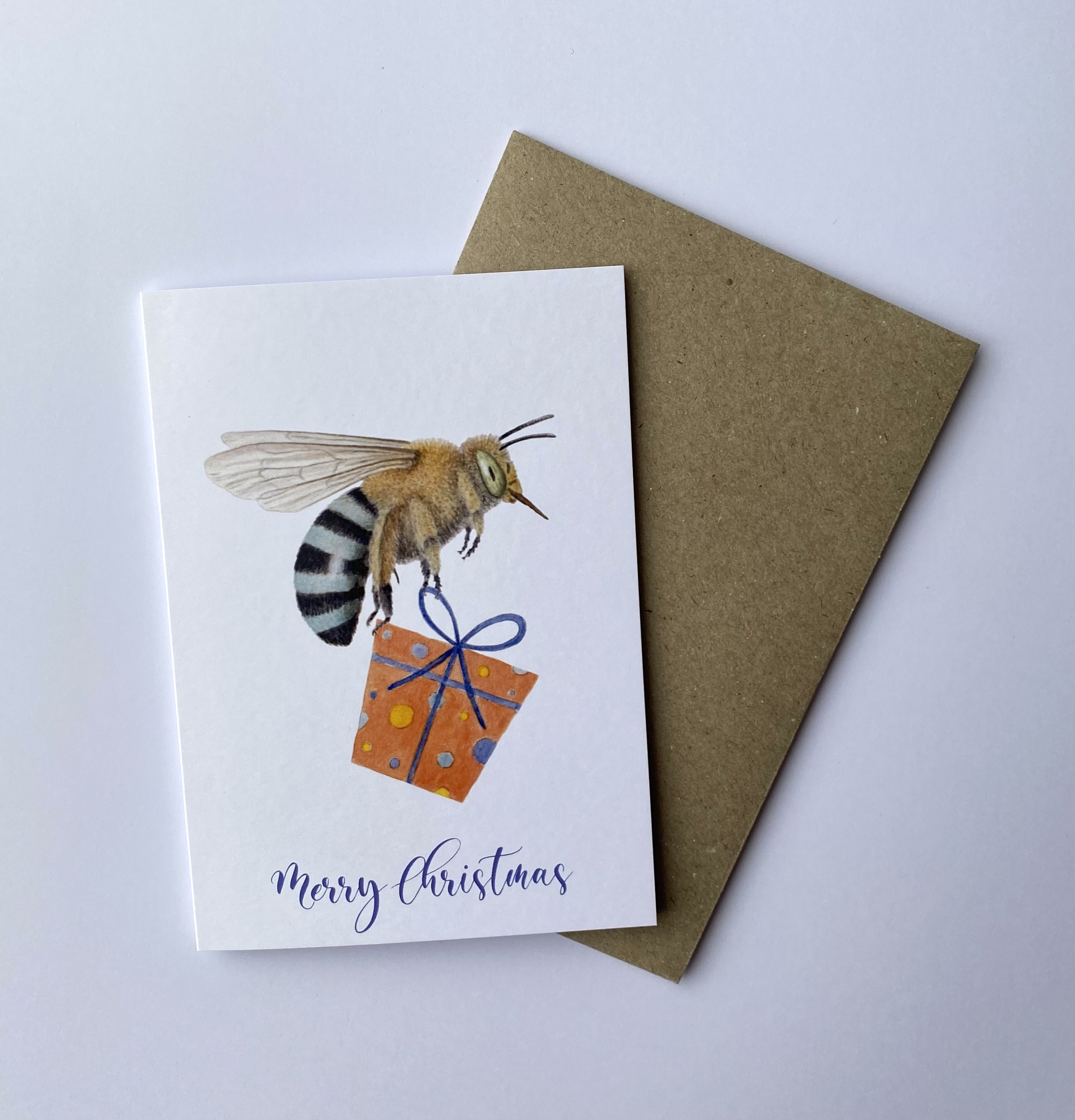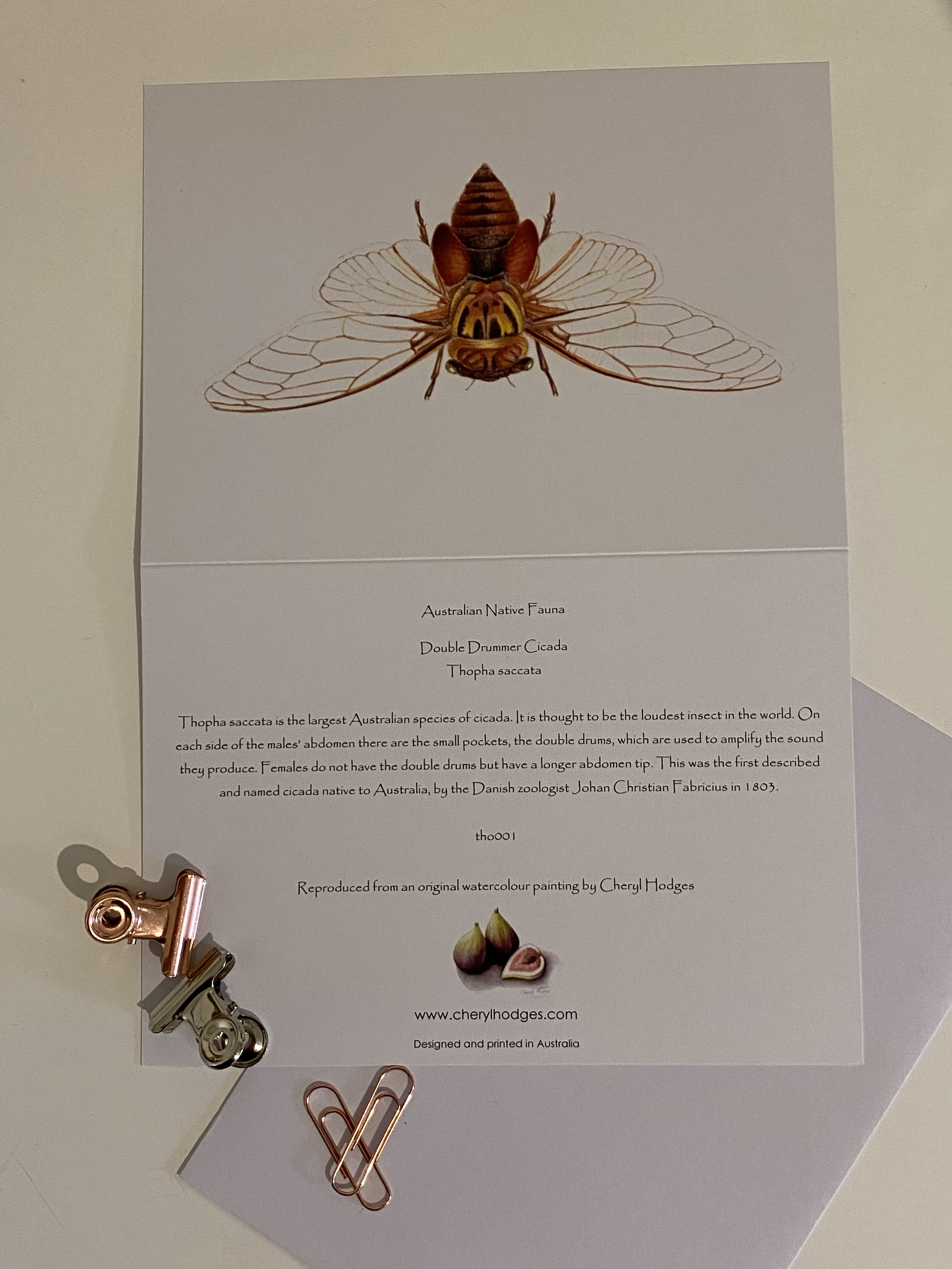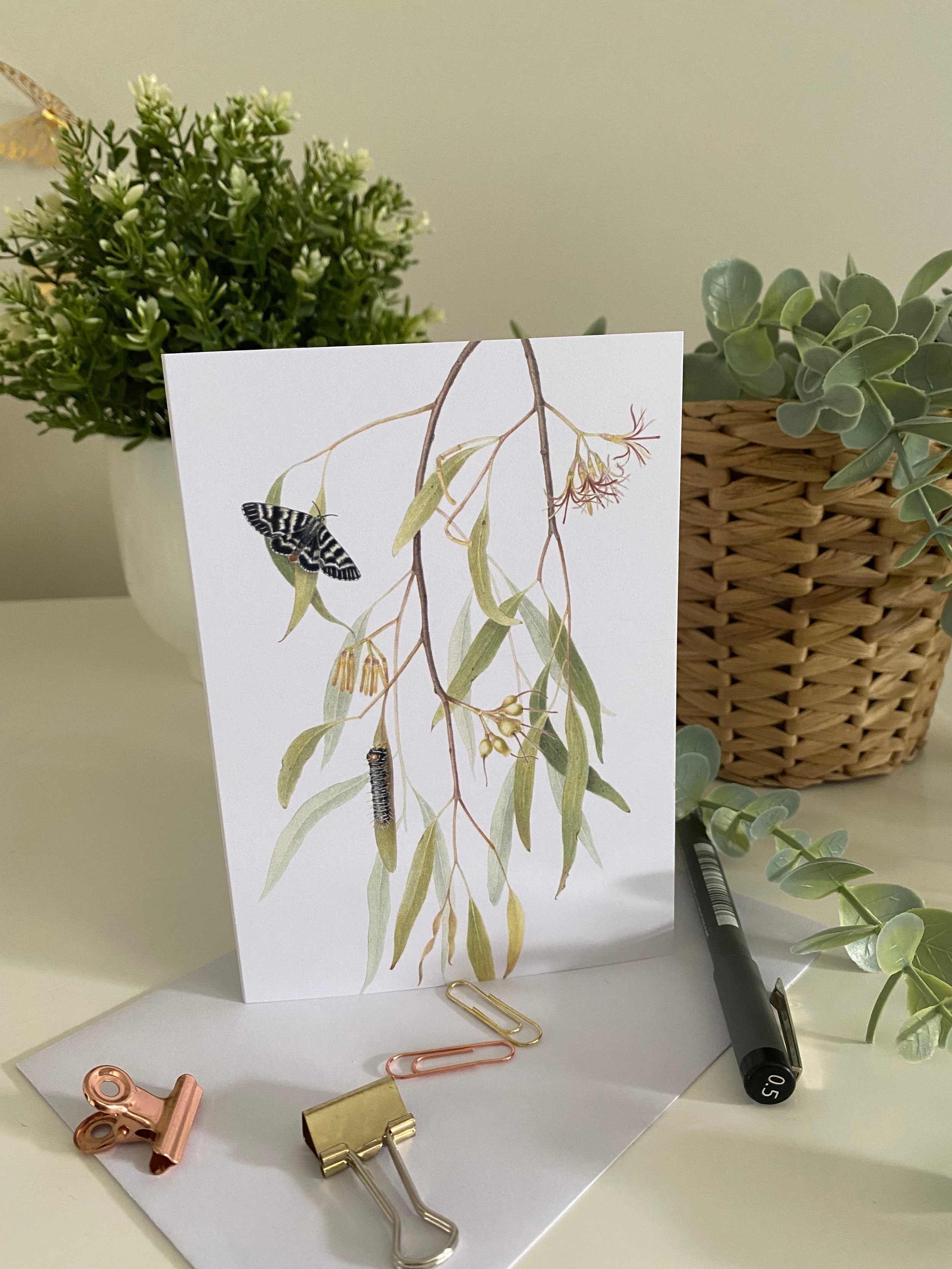 Image 1 of 2
Image 1 of 2

 Image 2 of 2
Image 2 of 2



Mistletoe and Mistletoe Day Moth - Card
Mistletoe and Mistletoe Day Moth - Amyema sp. and Comocrus behri. Australian Native Flora and Insects.
Reproduced from an original watercolour painting by Cheryl Hodges. Greeting card 10 x 15cm, blank inside with brown recycled envelope.
Text on reverse of card reads:
This mistletoe, Amyema sp. is growing on a Eucalyptus tree. In Australia we have over 90 species of mistletoe. Mistletoes have had a bad reputation which is undeserved. Mistletoes are semi-parasitic - they contain chlorophyll so can photosynthesise, but take water and some nutrients from their host plant. If a tree with mistletoe dies, it was possibly already under stress. The fruit, flowers, nectar and leaves are nutritious and beneficial for a variety of wildlife including birds, mammals and insects. Birds eat the fruit, then wipe the seed on a branch, where it quickly germinates.
The Mistletoe Day Moth is a large black and white day-flying moth, often mistaken for a butterfly. The caterpillar is black with fine white stripes, and when disturbed, rears up lifting its head and thorax.
Mistletoe and Mistletoe Day Moth - Amyema sp. and Comocrus behri. Australian Native Flora and Insects.
Reproduced from an original watercolour painting by Cheryl Hodges. Greeting card 10 x 15cm, blank inside with brown recycled envelope.
Text on reverse of card reads:
This mistletoe, Amyema sp. is growing on a Eucalyptus tree. In Australia we have over 90 species of mistletoe. Mistletoes have had a bad reputation which is undeserved. Mistletoes are semi-parasitic - they contain chlorophyll so can photosynthesise, but take water and some nutrients from their host plant. If a tree with mistletoe dies, it was possibly already under stress. The fruit, flowers, nectar and leaves are nutritious and beneficial for a variety of wildlife including birds, mammals and insects. Birds eat the fruit, then wipe the seed on a branch, where it quickly germinates.
The Mistletoe Day Moth is a large black and white day-flying moth, often mistaken for a butterfly. The caterpillar is black with fine white stripes, and when disturbed, rears up lifting its head and thorax.
Mistletoe and Mistletoe Day Moth - Amyema sp. and Comocrus behri. Australian Native Flora and Insects.
Reproduced from an original watercolour painting by Cheryl Hodges. Greeting card 10 x 15cm, blank inside with brown recycled envelope.
Text on reverse of card reads:
This mistletoe, Amyema sp. is growing on a Eucalyptus tree. In Australia we have over 90 species of mistletoe. Mistletoes have had a bad reputation which is undeserved. Mistletoes are semi-parasitic - they contain chlorophyll so can photosynthesise, but take water and some nutrients from their host plant. If a tree with mistletoe dies, it was possibly already under stress. The fruit, flowers, nectar and leaves are nutritious and beneficial for a variety of wildlife including birds, mammals and insects. Birds eat the fruit, then wipe the seed on a branch, where it quickly germinates.
The Mistletoe Day Moth is a large black and white day-flying moth, often mistaken for a butterfly. The caterpillar is black with fine white stripes, and when disturbed, rears up lifting its head and thorax.

